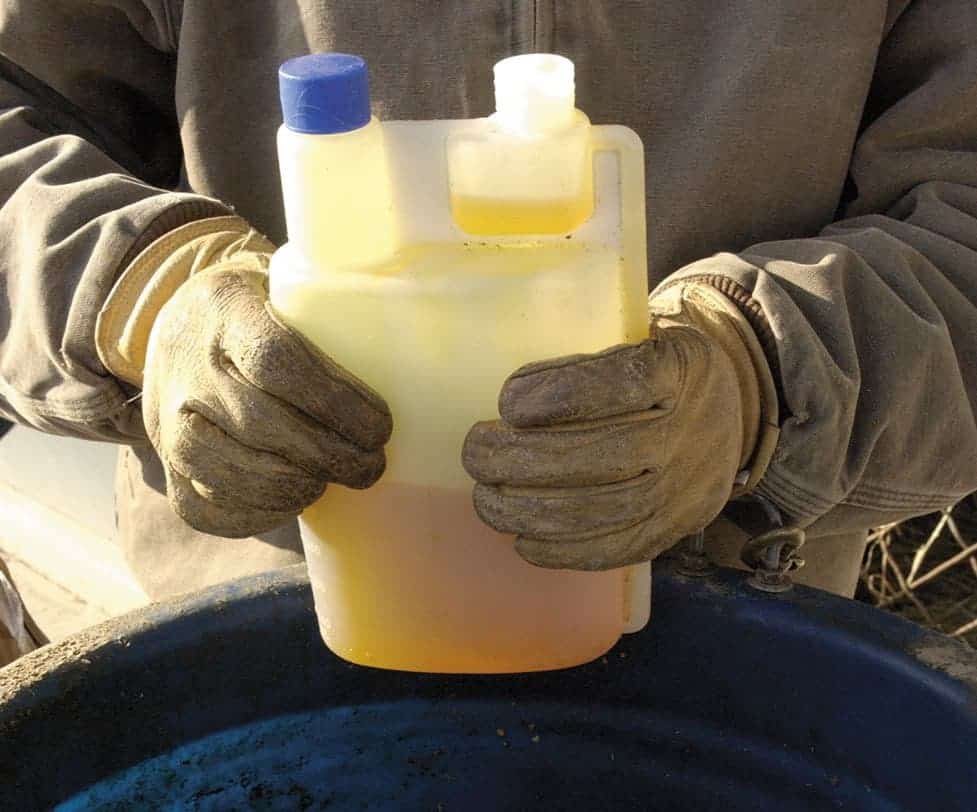[ad_1]

Q: My new mare’s earlier homeowners stated she’s a tough keeper in the course of the winter and really helpful including fats to her food regimen within the colder months to assist keep her weight. However once I regarded on-line, I discovered many suggestions about completely different dietary supplements, oils, and grains, and I’m undecided the place to begin. What’s the easiest way so as to add fats to a horse’s food regimen, and which merchandise are handiest?
A: When including fats to the food regimen for weight achieve it is very important make sure the food regimen stays well-balanced. Due to this fact, essentially the most nutritionally full means so as to add a fats supply to your horse’s food regimen is to make use of a better fats fortified industrial feed fed on the really helpful day by day consumption stage. These feeds typically having 10-12% crude fats, not solely including fats to the food regimen but additionally important nutritional vitamins and minerals, protein, and different vitamins.
Oils are an effective way so as to add fats energy to a ration however present solely energy, not different vitamins. Relying on the remainder of the horse’s food regimen, it’s doable when supplementing oil to offer your horse with sufficient energy however create a food regimen that’s poor in different key vitamins, particularly minerals and nutritional vitamins. This might hinder weight achieve, as these important vitamins are essential for correct functioning of metabolic pathways. One other good thing about utilizing fortified high-fat feeds is that they have an inclination to comprise sources of extremely digestible fiber, similar to beet pulp and almond hulls, so that you get pleasure from including cool energy from two completely different sources: fats and fiber.
Rice bran is a well-liked alternative on account of a fats content material of greater than 20% on a dry matter foundation. Rice bran ought to be stabilized and sometimes has added calcium carbonate to stability its in any other case excessive phosphorus content material. Nevertheless, few rice brans are in any other case fortified, so are unlikely to assist with the general provision of different essential important vitamins. Some better-quality rice-bran merchandise can have added vitamin E. This partly helps keep the product’s shelf life; horses with increased fats intakes even have increased vitamin E necessities. Because of this, should you examine feeds which have, say, 6% versus 12% crude fats, you’ll sometimes discover that the 12% crude fats feed has a better vitamin E content material.
It’s tempting and simple to pour oil over an present food regimen, which will definitely improve calorie consumption; nonetheless, feeding massive quantities of oil can backfire. For those who overwhelm the small gut’s potential to digest and soak up fats it should move into the cecum and huge colon the place it may disrupt fiber fermentation. This might really lead to weight reduction because the horse wouldn’t be capable of get as a lot dietary profit from the forage within the food regimen. With very excessive intakes or sudden introductions of bigger quantities of oil, manure can turn out to be oily. For these causes, introduce oil slowly over 10 to 14 days, growing by not more than 1 / 4 cup each two to a few days till you attain the specified quantity.
Oils all have completely different compositions of fatty acids, and just lately omega-3 versus omega-6 fatty acids have gained lots of consideration. It is because these fatty acids play necessary roles in cell membrane fluidity, irritation, and immunity. Each are essential for these necessary capabilities, however relative quantities of every may affect total response. Consequently, corn oil is not as fascinating as these oils with increased omega-3 contents similar to canola oil. Flax oil and camelina oil present extra omega-3 than 6 fatty acids and are good selections; nonetheless, in massive quantities value may be inhibitive.
An 8 fluid ounce measuring cup holds roughly 200 g of vegetable oil, which supplies 1.8 Mcal of digestible vitality, which is about 10% of a 500 kg (1,100 pound) horse’s upkeep necessities and is akin to the vitality supplied by simply over a pound of oats. Though the horse’s pure food regimen is comparatively low in crude fats, horses seem to make the most of fats effectively and have been fed as much as 230 g of fats per kilogram dry matter consumed as corn oil. Nevertheless, the Nationwide Analysis Council cautions in opposition to feeding soybean oil at intakes exceeding 0.7 grams per kilogram physique weight per day. Due to this fact, it’s seemingly finest to maintain supplemental oil consumption at not more than about 2 cups per day for a mean sized horse.
Lastly, take into account whether or not growing fats is definitely the very best feeding choice for stopping weight reduction in winter. Many horses drop some weight within the winter because of the further calorie expenditure used to maintain heat. Feeding additional hay not solely will increase calorie consumption but additionally generates inner warmth because of the fermentation course of essential for digestion within the horse’s hind intestine. Due to this fact, growing forage for horses which have good dentition is at all times my first alternative.
[ad_2]
Supply hyperlink
